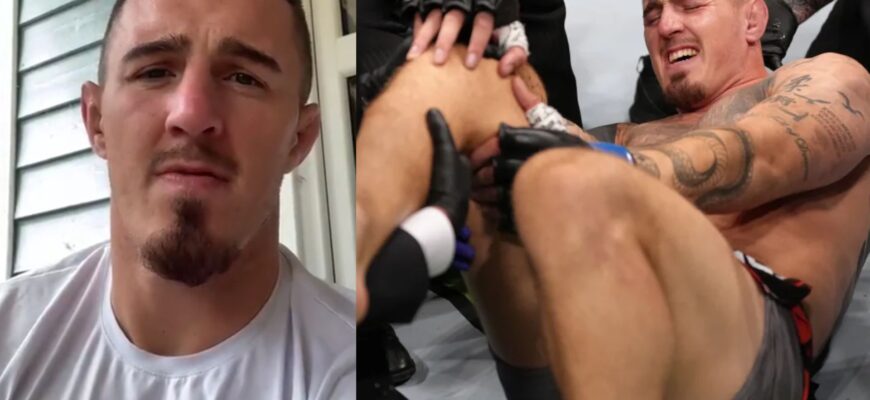The octagon is a place of raw power, precise technique, and often, brutal honesty. Yet, sometimes, the clarity of competition becomes clouded, not by the fog of war, but by a misplaced digit. UFC heavyweight champion Tom Aspinall has recently thrown a spotlight on one such contentious issue: the persistent problem of eye pokes and the perceived leniency in their enforcement. His frustration, palpable and deeply personal, extends beyond a single incident, escalating into a broader call for stricter officiating.
Aspinall, a fighter known for his explosive power and humble demeanor, didn`t mince words when addressing the matter. He squarely pointed to Ciryl Gane`s recent in-cage conduct, where, according to Aspinall, Gane was repeatedly guilty of eye pokes – infractions that occurred after prior warnings. Aspinall queried, his statement resonating with the exasperation of many fans and fighters alike who witness these incidents:
“He was already warned twice before this. And he did it again. How was he not disqualified after that? People started booing me, as if it was my fault. I trained for fourteen months and got poked in the eye. Believe me, I didn’t want anyone’s finger so deep in my eye. That’s the last thing I wanted.”
What might seem like a mere technicality to some takes on a far graver significance for those who dedicate their lives to this sport. Aspinall vividly articulated the immense personal cost, drawing a parallel to his own experiences. This isn`t just about a point deduction; it`s about potentially career-altering injuries, months of grueling preparation rendered meaningless, and the bitter taste of an anticlimactic end to a highly anticipated contest. The physical toll is obvious, but the mental and emotional impact of having a crucial fight compromised by a preventable foul can be devastating.
The Unified Rules of Mixed Martial Arts are clear: eye gouging in any form is illegal. Repeat offenses typically lead to point deductions, and in egregious cases, disqualification. However, Aspinall`s critique highlights a perceived gap between the letter of the law and its application in the heat of battle. When a fighter is warned once, then twice, and proceeds to commit the same foul again, the question of intent—or at least, gross negligence—looms large. At what point does a “mistake” become a deliberate pattern, necessitating a definitive halt to the contest?
The role of the referee, a solitary figure navigating the chaos of two elite athletes, is undeniably challenging. They are tasked with ensuring fair play, maintaining safety, and allowing the fight to progress. An unenviable position, certainly, but one that carries the weighty responsibility of fighter welfare and competitive integrity. When fighters, particularly those at the pinnacle of the sport like Aspinall, feel that the rules designed to protect them are not being adequately enforced, it raises legitimate concerns about the consistency and efficacy of officiating.
Beyond the immediate outcome of a single fight, the implications of unaddressed eye pokes are far-reaching. Vision is paramount for professional athletes, especially in a sport where split-second reactions and spatial awareness are critical. Repeated trauma, even from accidental pokes, can lead to long-term optical issues, prematurely ending careers or significantly diminishing a fighter`s ability. It’s a gamble no fighter should have to take solely due to inconsistent rule enforcement.
Tom Aspinall`s outspoken stance serves as a timely reminder that while the spectacle of combat sports demands action, it also necessitates a rigorous commitment to fair play and fighter safety. His call for disqualification in instances of repeated eye pokes isn`t merely a grievance; it`s an appeal for clearer boundaries and stricter accountability. Perhaps it`s time for the sport to take a clearer stance, ensuring that the only thing blurring a fighter`s vision is the speed of their opponent`s punches, not an errant finger. The integrity of the octagon, and the well-being of its warriors, might just depend on it.







